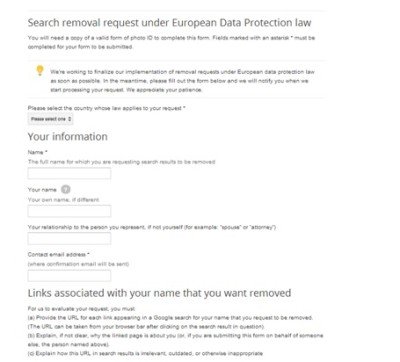Now it’s possible to make search removal requests and remove the links that include your names from Google search results. However, for that, you must be a European or one of the few prestigious names listed by Google. This new facility of search removal requests has been introduced recently by Google due to the new law that has been enforced by Europe’s highest court under European Data Protection law. The new law was introduced on May 13, 2014.
Right to be forgotten
Google, Europe’s largest search engine, was totally against this new law. In fact, there was a statement made by Google executive chairman Eric Schmidt that,
“You have a collision between a ‘right to be forgotten’ and a right to know. From Google’s perspective, that’s a balance. Google believes, looking at the decision, which is binding, that the balance that was struck was wrong.”
But, Google somehow found a midway to strike a balance. Google was successful in setting up a way where people can make search removal request to Google and the links containing their names will be removed from the search results.
For this, Google has published an online form that requesters need to fill up. In order to complete the form, the requesters will also require a ‘valid form of photo ID’ which may include a copy of national ID card, valid driver’s license or any other valid photo ID.
Requesting to remove the links containing your names using the search removal requests does not mean that the page will be removed from the internet. It simply means that the link won’t appear in the search results from Google. Google is taking a safe approach towards these search removal requests because of possibilities of fraudulent requests. Google mentioned that the company will validate the search removal requests by making sure that the information is really “irrelevant, outdated, or otherwise inappropriate”.

Google already has a separate section under its ‘Legal’ category, where users can make search removal requests to remove content from Google search results. In this section, users need to answer few questions posted on the page in order to reach to the appropriate content removal request form. However, this ‘right to be forgotten‘ feature can be considered as the big step forward by Google in protecting the privacy of users. It will be interesting to see how Google manages the thousands of requests made using ‘right to be forgotten form’. It seems that Google has already received many such requests over the past few weeks!
Leave a Reply